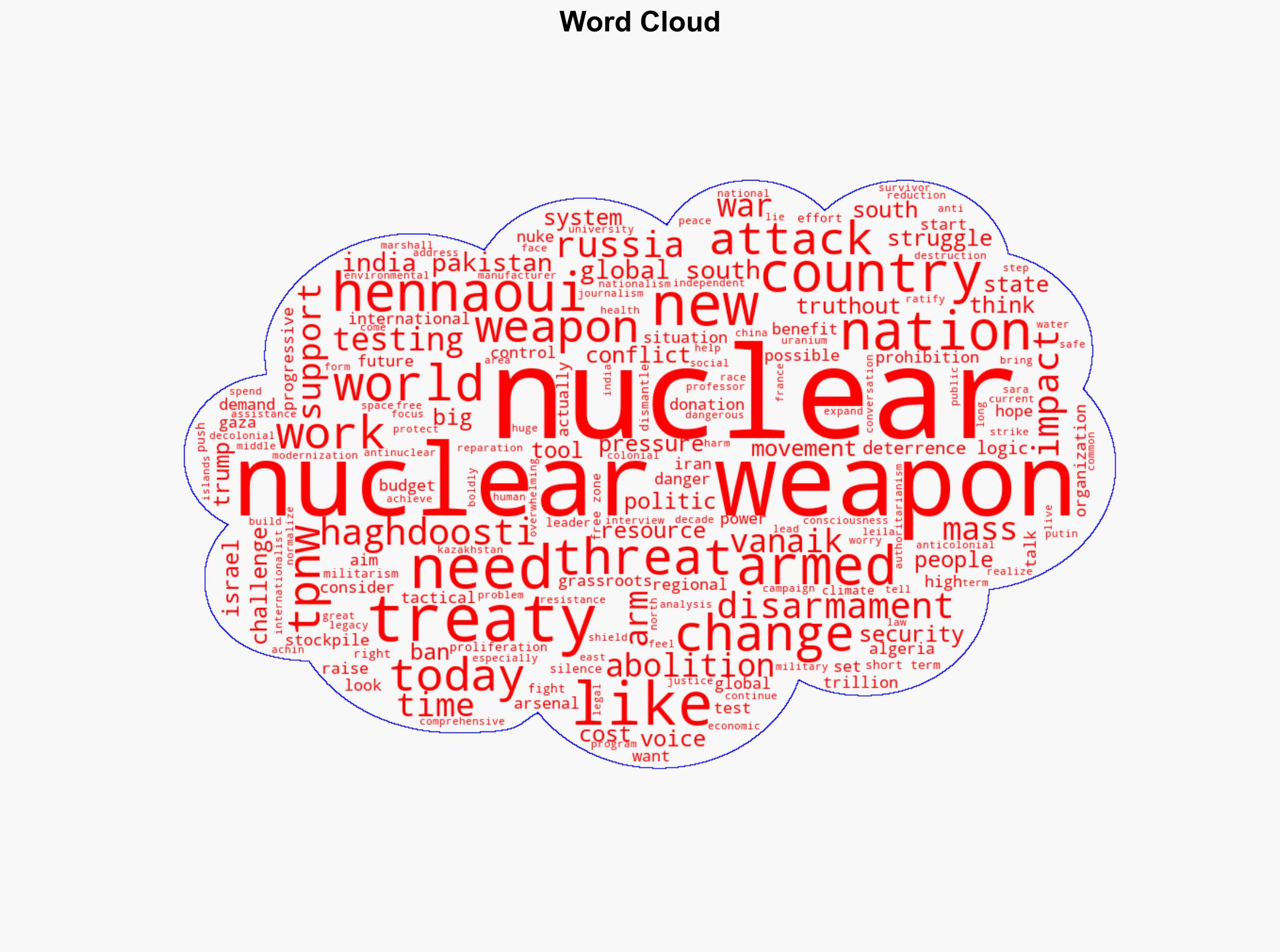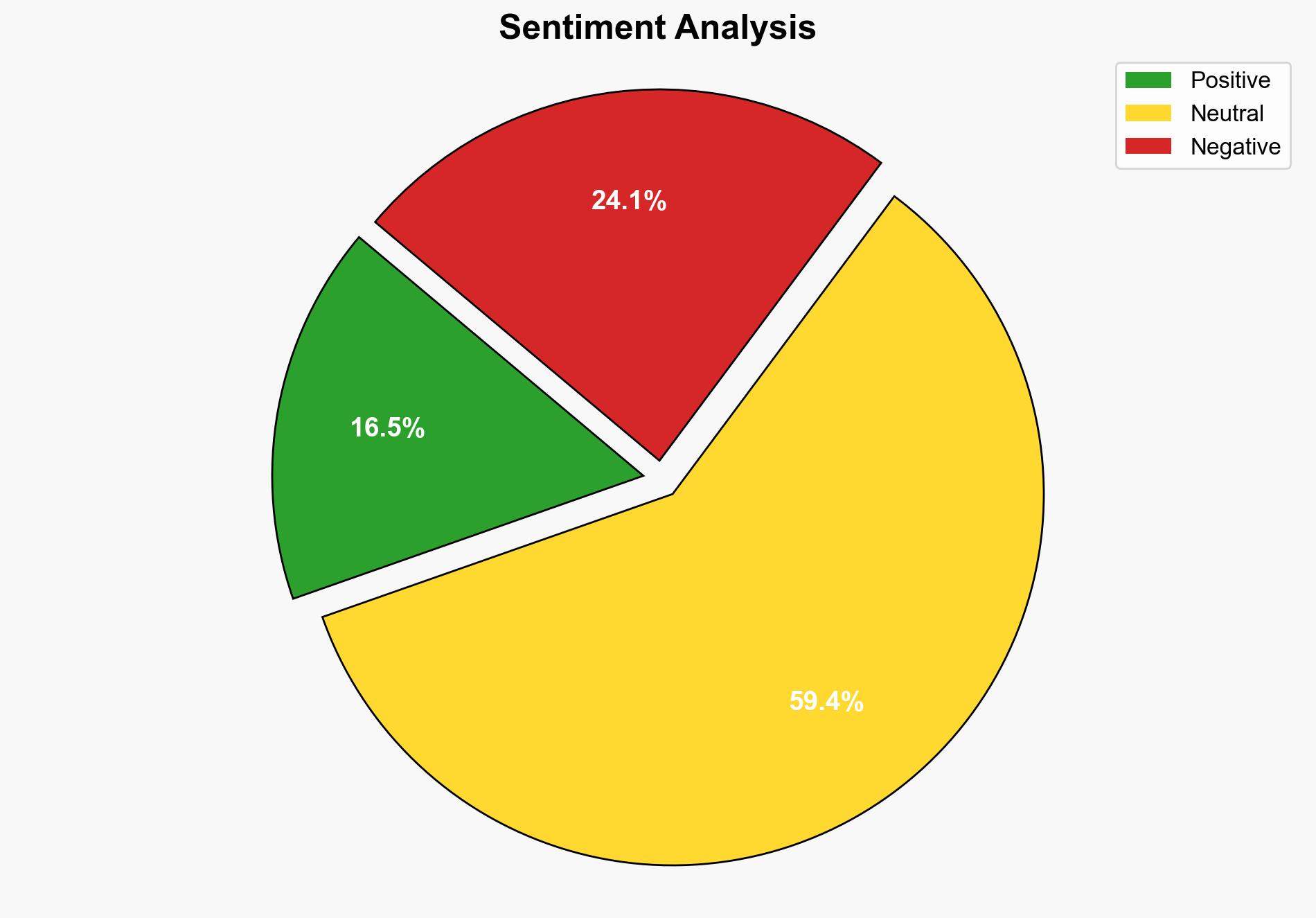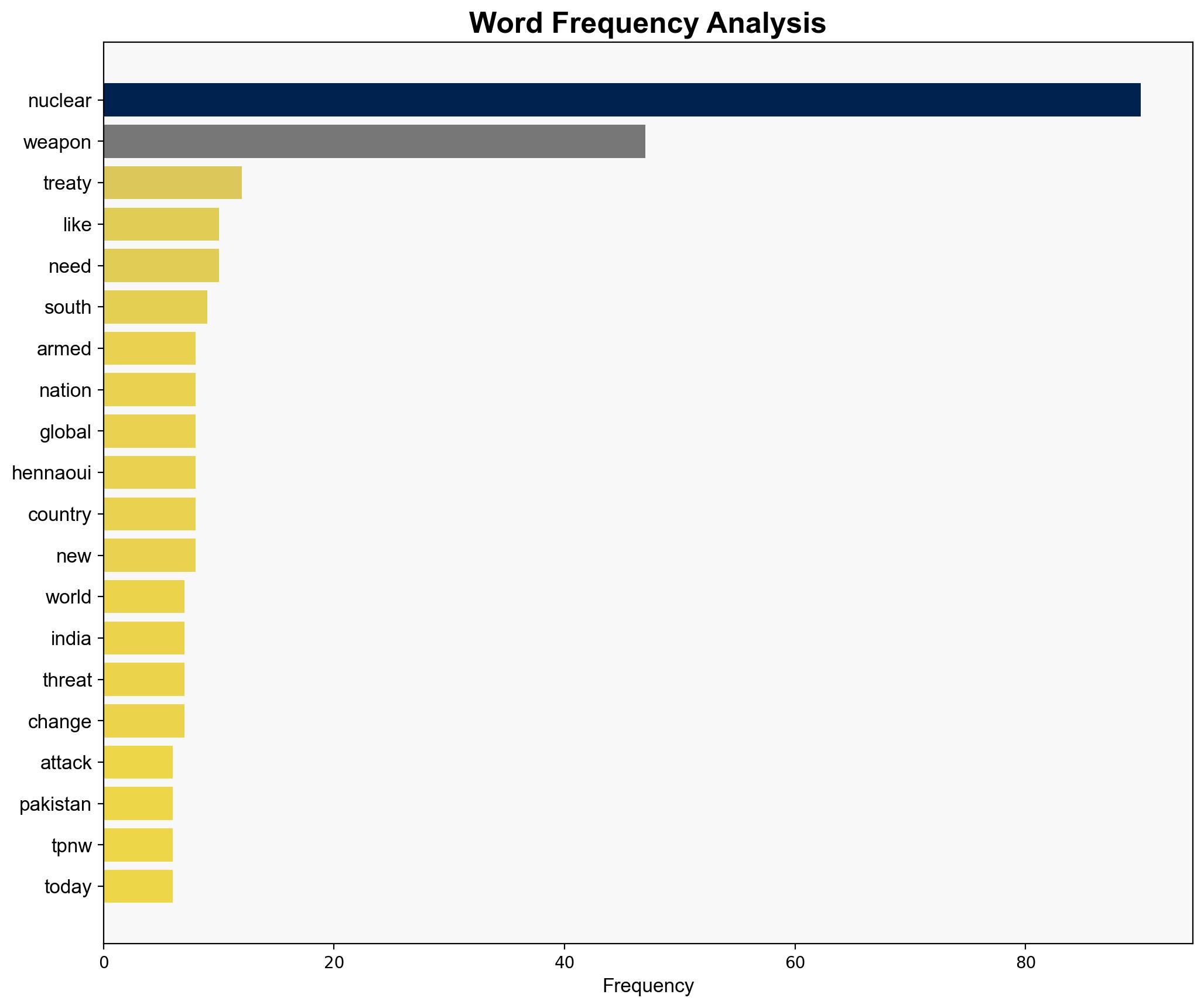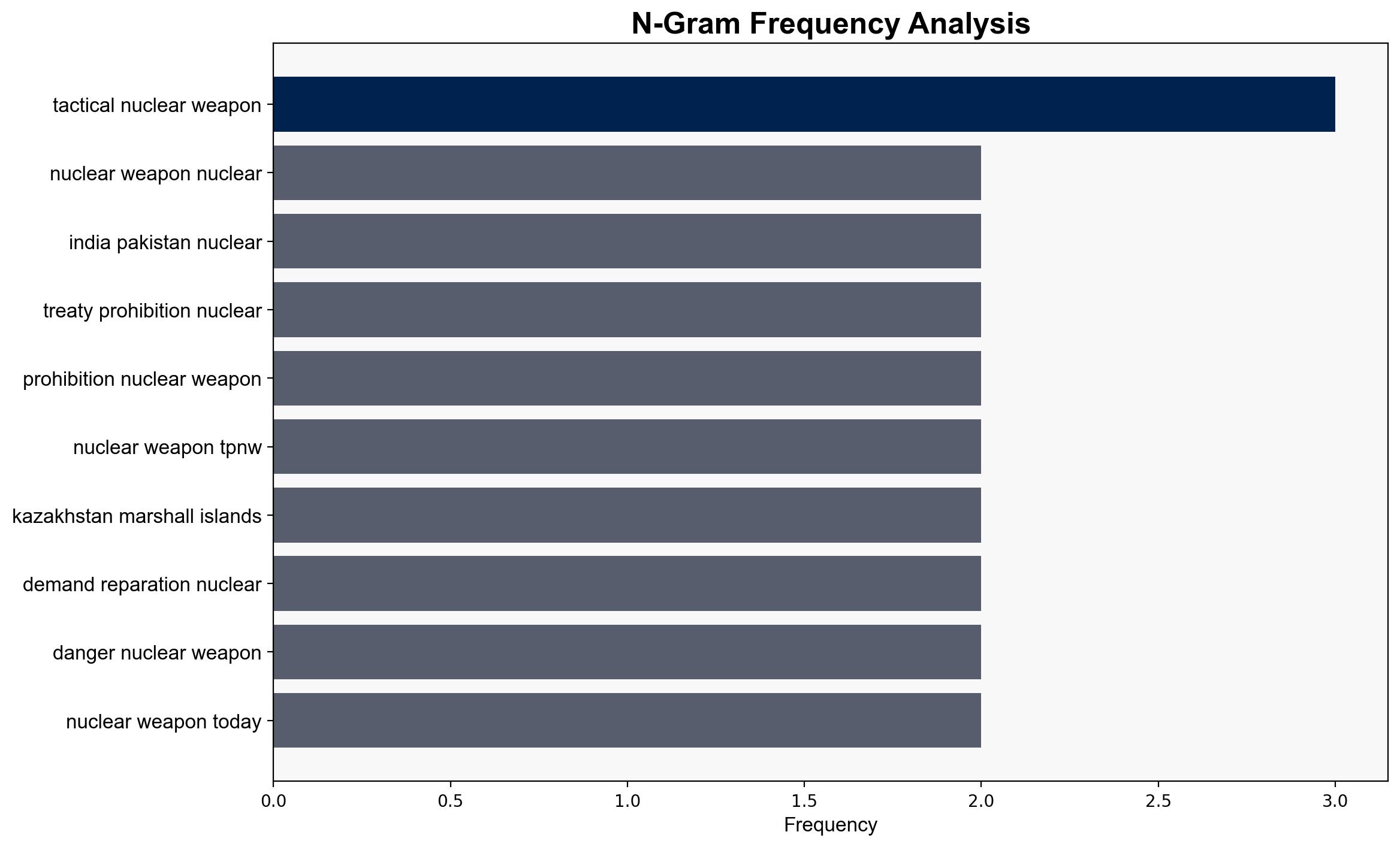As Nuclear Tensions Reach New Heights How Can We Win Global Disarmament – Truthout
Published on: 2025-10-04
Intelligence Report: As Nuclear Tensions Reach New Heights How Can We Win Global Disarmament – Truthout
1. BLUF (Bottom Line Up Front)
The most supported hypothesis is that global nuclear disarmament efforts are being undermined by geopolitical tensions and modernization programs, leading to increased nuclear proliferation risks. Confidence Level: Moderate. Recommended action includes strengthening international treaties and fostering diplomatic engagement among nuclear and non-nuclear states.
2. Competing Hypotheses
1. **Hypothesis A**: Nuclear disarmament is achievable through international solidarity and treaties like the Treaty on the Prohibition of Nuclear Weapons (TPNW), driven by the Global South and anti-nuclear movements.
– **Supporting Evidence**: Majority of nations, especially from the Global South, have ratified the TPNW. There is a strong anti-nuclear sentiment and advocacy for reparations from nuclear-affected regions.
2. **Hypothesis B**: Geopolitical tensions and modernization of nuclear arsenals by major powers are making disarmament increasingly unlikely.
– **Supporting Evidence**: The U.S. and Russia are modernizing their arsenals, with Russia stepping back from the Comprehensive Nuclear-Test-Ban Treaty. Nuclear-armed states like Israel, India, and Pakistan are involved in regional conflicts, further complicating disarmament efforts.
Using ACH 2.0, Hypothesis B is better supported due to the current geopolitical climate and actions by nuclear states that contradict disarmament goals.
3. Key Assumptions and Red Flags
– **Assumptions**: Hypothesis A assumes that international treaties and grassroots movements can overcome geopolitical barriers. Hypothesis B assumes that current geopolitical tensions will persist and escalate.
– **Red Flags**: The potential for cognitive bias exists in underestimating the influence of non-nuclear states. Inconsistent data on the actual impact of grassroots movements on policy change.
4. Implications and Strategic Risks
– **Patterns**: Increasing nuclear rhetoric and modernization efforts suggest a potential arms race.
– **Cascading Threats**: Regional conflicts involving nuclear-armed states could escalate into broader confrontations.
– **Economic and Geopolitical Dimensions**: Economic sanctions and diplomatic isolation could further entrench nuclear policies.
– **Psychological Dimensions**: Normalization of nuclear threats may desensitize global populations to the risks.
5. Recommendations and Outlook
- Strengthen and expand international treaties like the TPNW to include more nuclear-armed states.
- Enhance diplomatic efforts to reduce tensions in nuclear hotspots such as South Asia and the Middle East.
- Best Case: Global cooperation leads to significant disarmament progress.
- Worst Case: Escalation of conflicts involving nuclear-armed states.
- Most Likely: Continued tension with sporadic diplomatic engagements.
6. Key Individuals and Entities
– Donald Trump
– Vladimir Putin
– Sara Haghdoosti
– Leila Hennaoui
– Achin Vanaik
7. Thematic Tags
national security threats, nuclear proliferation, geopolitical tensions, disarmament diplomacy




